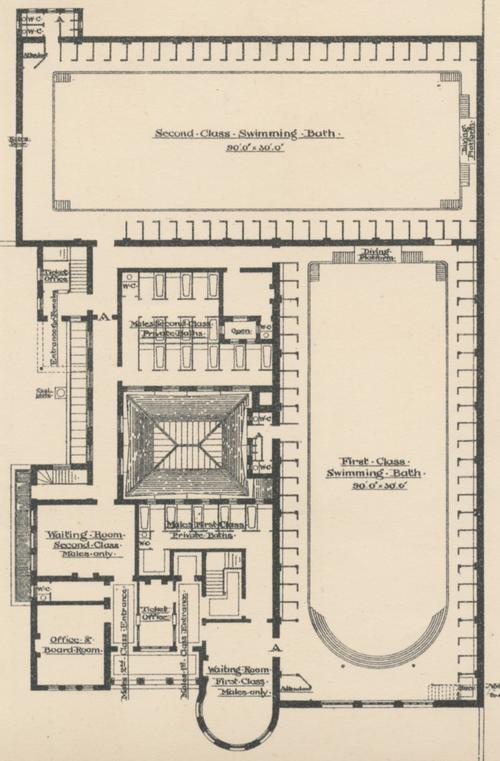Lecture by Julie Collins: From Cure to Cleanliness: Tracing the evolution of therapeutic bathing architecture
The Baths at Gravesend, engraved by H. Adlard, drawn by Geo. Shepherd, 1828
Image Credit: Chamberlain collection, S260/282/2, Architecture Museum, University of South Australia
Plan of Lewisham Public Baths at Ladywell, The Builder, 1 December 1883
Image Credit: Architecture Museum, University of South Australia
The HERA project The European Spa as a Transnational Public Space and Social Metaphor and the ARTES Global Travel Cultures Research Seminar (Amsterdam University) present:
Dr Julie Collins (University of South Australia)
From Cure to Cleanliness: Tracing the evolution of therapeutic bathing architecture
Comments by Dr Oliver Sukrow (Technische Universität Wien)
Friday 16 April 2021
10am (online)
Water and steam have been seen as a source of health for millennia, with natural springs and thermal waters especially prized for their healing properties. By the eighteenth century, physicians were recommending ‘taking the waters’ at spas and hydropathic resorts as a cure for many diseases and disorders from tuberculosis to arthritis. However, by the nineteenth century, with Sanitary Reform occurring across the world, public baths were viewed less as health resorts solely for the wealthy and more as places associated with cleanliness for the middle and lower classes, with laundry facilities increasingly provided within the same buildings.
This presentation will examine the health-related rationales behind the provision of places for public bathing through history and how these ideas shaped their architecture. It will explore the architectural design and functioning of complexes associated with public bathing, from hydropathic resorts and spas, thermal, vapour and sea baths, to public baths and later, swimming pools. The influence which European architectural precedents had on these building types around the globe and the ways these ideas travelled will be also examined. This presentation aims to illuminate the ways in which health, social and cultural ideals influenced the architecture designed for ‘taking the waters’ and the trace the ways buildings changed in response to changing medical discoveries, ideals and technologies.
Dr Julie Collins is Research Fellow and Curator at the Architecture Museum at the University of South Australia. Her recent book The Architecture and Landscape of Health: A Historical Perspective on Therapeutic Places 1790-1940 examines buildings designed to treat or prevent disease in a time before pharmaceuticals and biomedicine emerged as first line treatments.
Please register with c.u.noack@uva.nl to receive an invitation to the zoom meeting!


